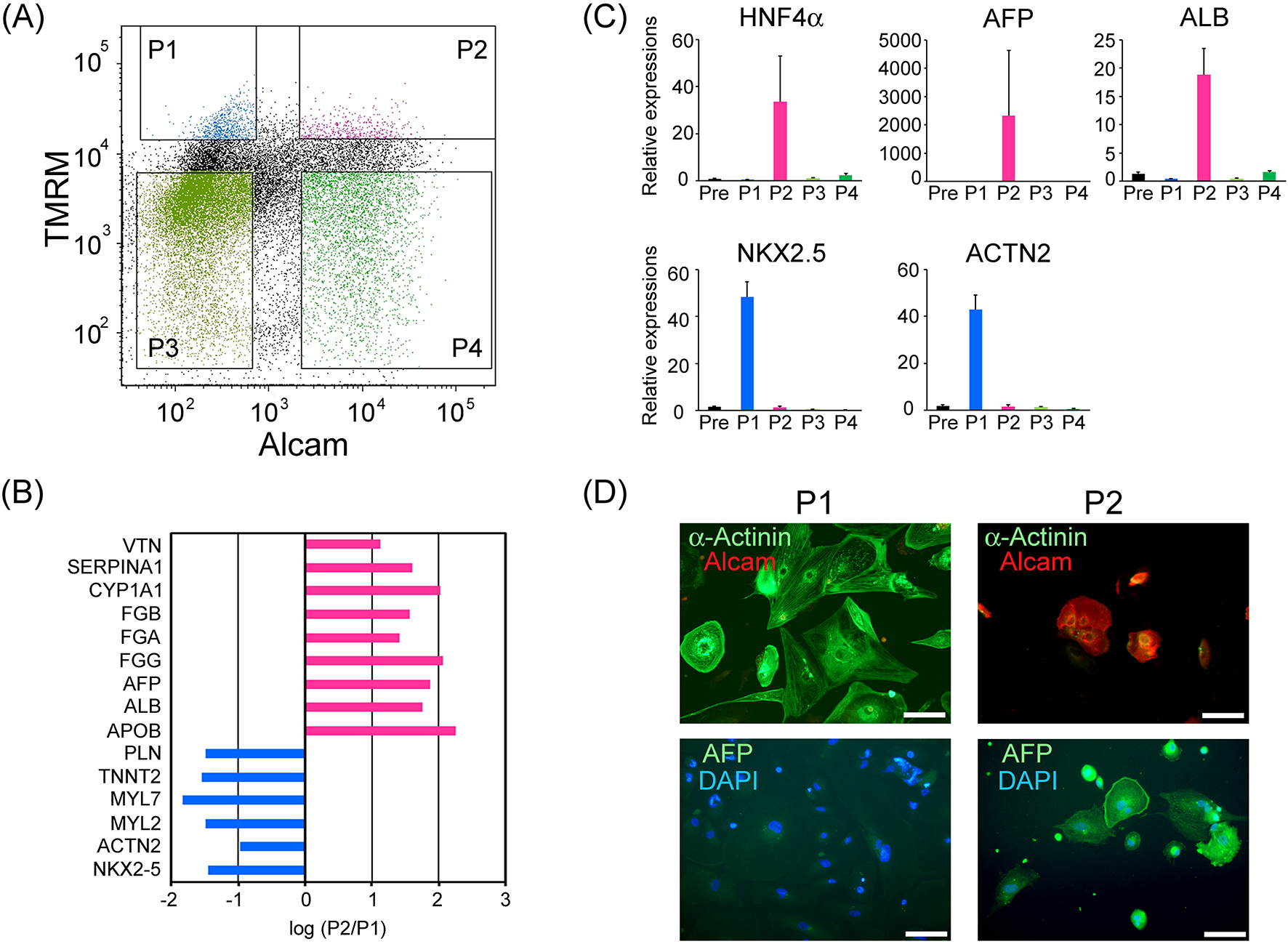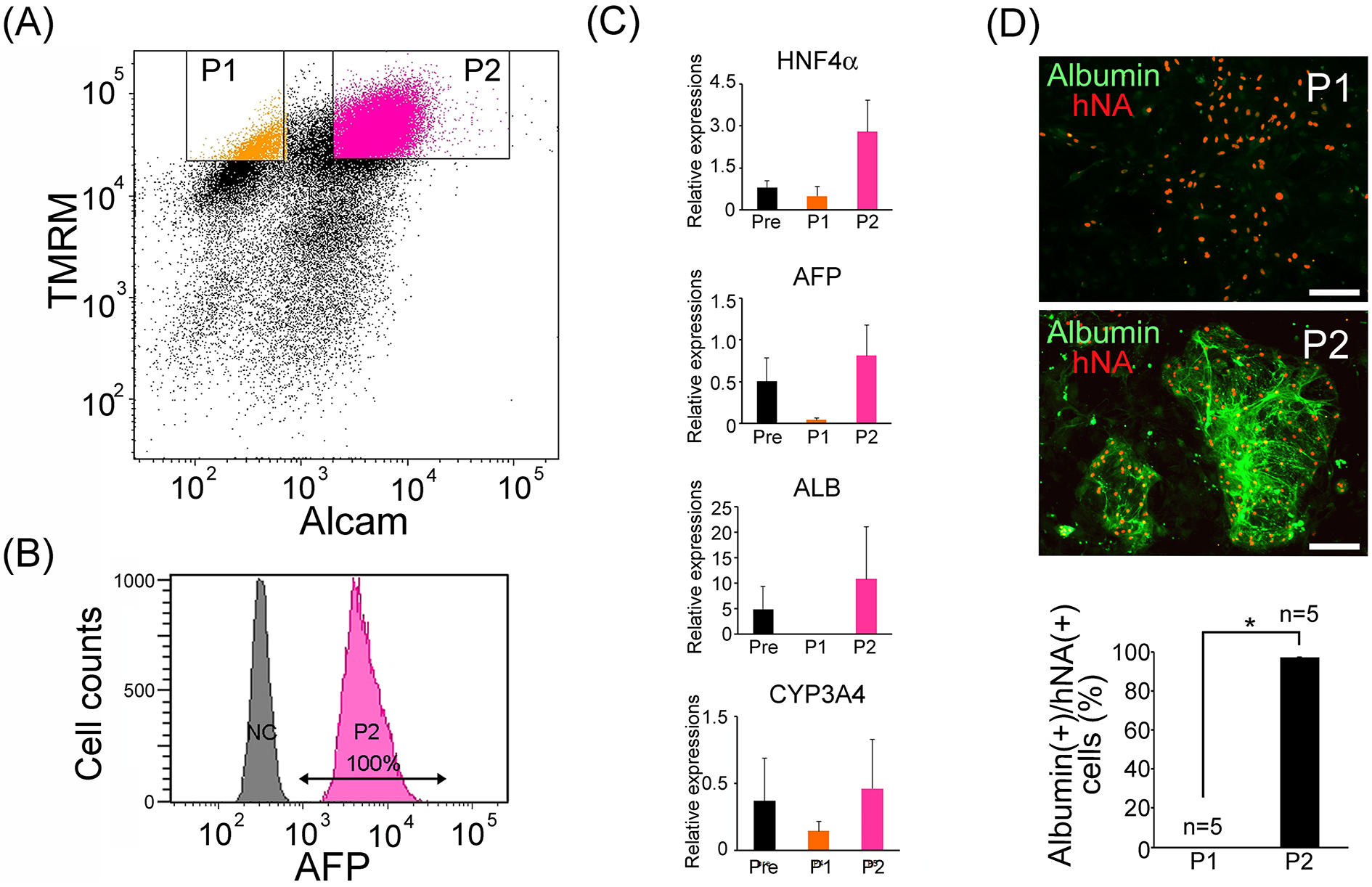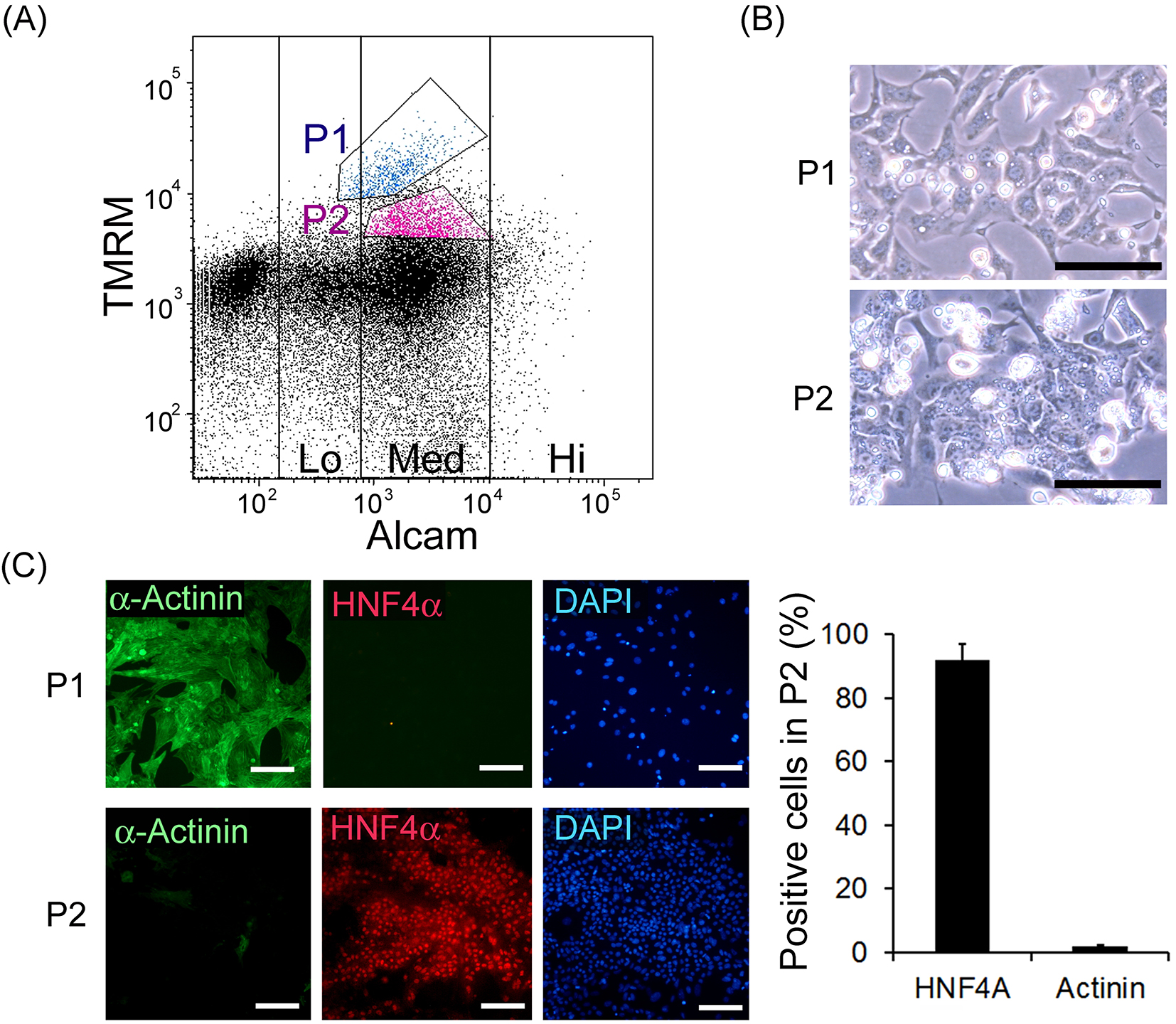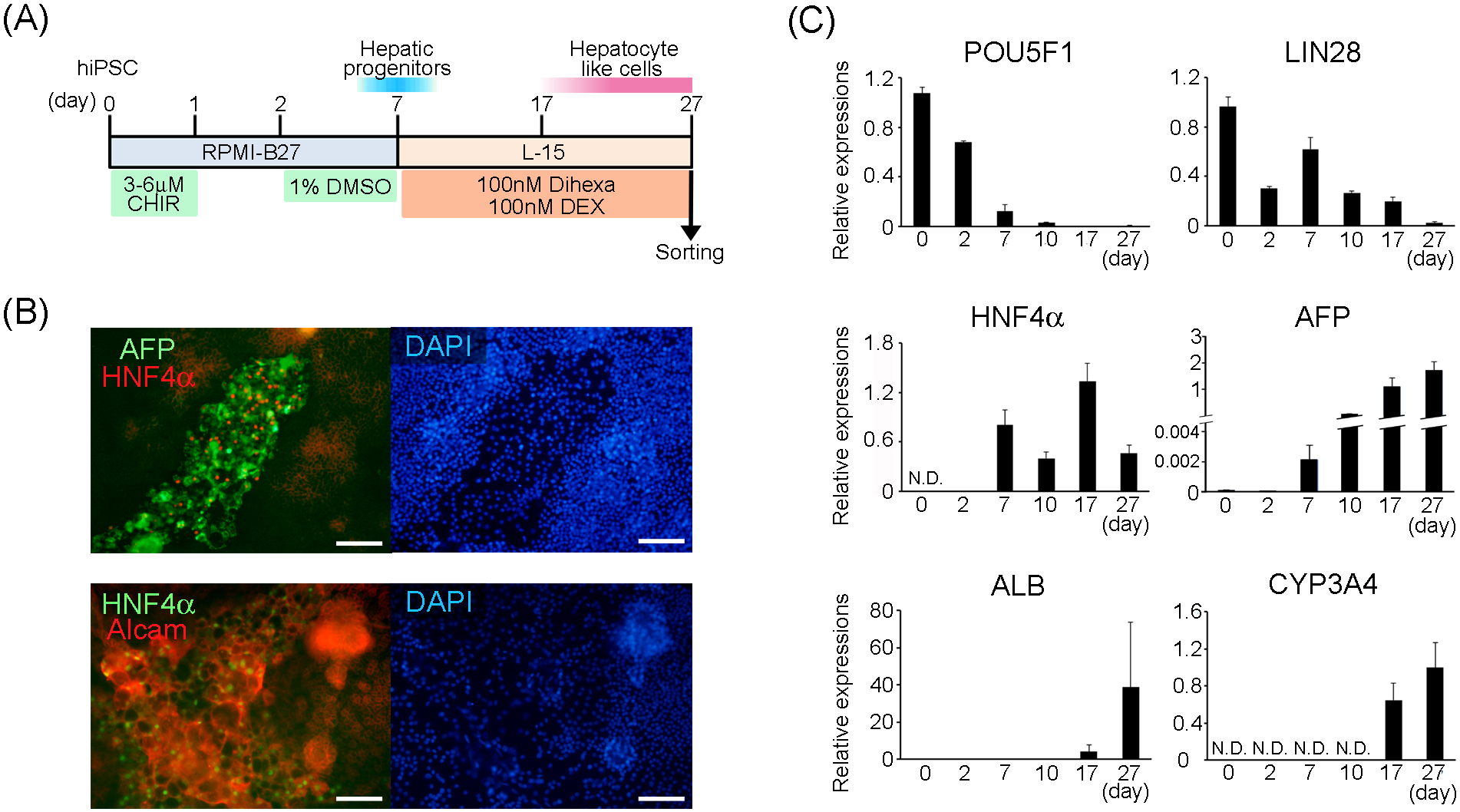Figure 1. Separation of hepatocyte-like cells and cardiomyocytes from human ESC-derived EBs.
(A) FACS separation of human ESC-derived EB cells by TMRM and ALCAM labeling with the antibody. (B) Signal differences between P1 and P2 in representative hepatic and cardiac gene expression in mRNA microarray analysis. (C) Confirmation of hepatic and cardiac genes by quantitative real-time PCR in presorted-cells (Pre) and sorted cells (P1, P2, P3, and P4). All data are represented as mean ± standard deviation (SD) (n = 3). Statistical analyses were conducted via one-way ANOVA and Tukey–Kramer test. *: p < 0.05. (D) Immunohistochemical detection of α-actinin, ALCAM, and AFP in cultured P1 and P2 cells. Scale bars represent 100 μm.
From: Hepatocyte-like Cells Derived from Human Pluripotent Stem Cells Can Be Enriched by a Combination of Mitochondrial Content and Activated Leukocyte Cell Adhesion Molecule

Figure 4. Purification of human iPSC-derived hepatocyte-like cells from the directed differentiation culture.
(A) FACS based separation of hepatocyte directed differentiated cells derived from human iPSCs by TMRM and cell surface ALCAM labeling with the antibody. (B) Direct FACS analysis of AFP expression in sorted P2 cells (NC: negative control: without first antibody). (C) Quantitative analysis of hepatic related gene expression using real-time PCR in presort (Pre)-, P1, and P2 cells. All data are represented as mean ± standard deviation (SD) (n = 3). Statistical analyses were conducted via one-way ANOVA and Tukey–Kramer test. * = p < 0.05. (D) Immunohistochemical detection of albumin and human nuclear antigen (hNA) in cultured P1 and P2 cells (scale bars represent 100 μm), and quantification of albumin (+) cell-fraction in hNA (+) cells. Data are represented as mean ± standard deviation (SD) (n = 5). Statistical analysis was conducted via student’s t-test. * = P < 0.05.
From: Hepatocyte-like Cells Derived from Human Pluripotent Stem Cells Can Be Enriched by a Combination of Mitochondrial Content and Activated Leukocyte Cell Adhesion Molecule




